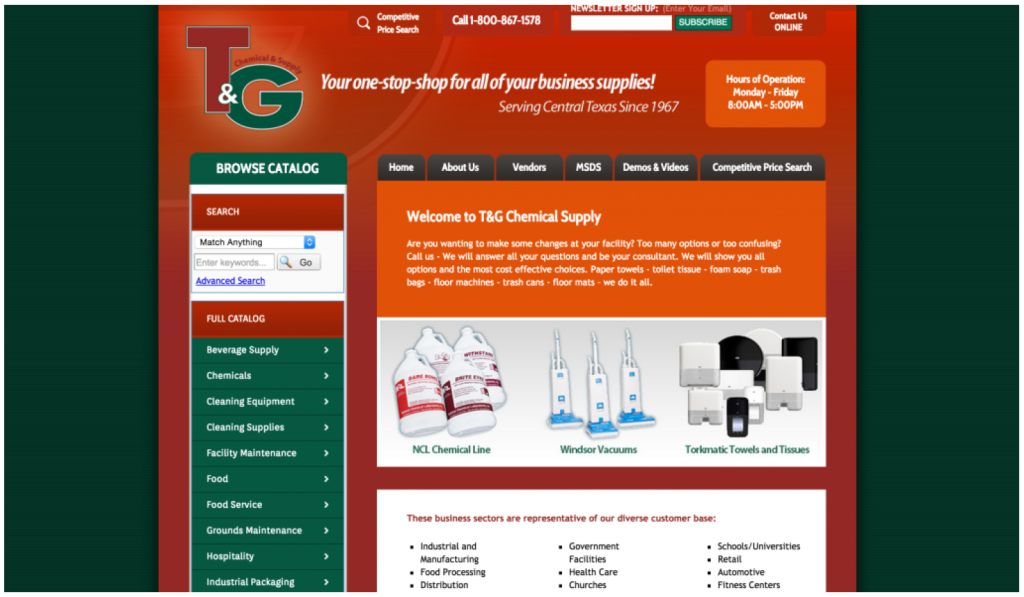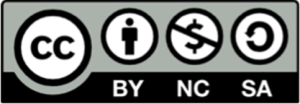10.3 Types of Business-to-Business (B2B) Offerings
After reading this section, students should be able to …
- Define the various types of offerings marketed to businesses.
- Identify some of the differences with regard to how the various types of business offerings are marketed.
Just like there are different types of consumer offerings, there are different types of business-to-business (B2B) offerings as well. But unlike consumer offerings, which are categorized by how consumers shop, B2B offerings are categorized by how they are used. The primary categories of B2B offerings are
- capital equipment offerings,
- raw materials offerings,
- original equipment manufacturer (OEM) offerings,
- maintenance, repair, and operations (MRO) offerings,
- facilitating offerings
10.3.1 Capital Equipment Offerings
A capital equipment offering is any equipment purchased and used for more than one year and depreciated over its useful life. Machinery used in a manufacturing facility, for example, would be considered capital equipment. Professionals who market capital equipment often have to direct their communications to many people within the firms to which they are selling because the buying decisions related to the products can be rather complex and involve many departments. From a marketing standpoint, deciding who should get what messages and how to influence the sale can be very challenging.

The grade of raw leather used to cover the sofa is purchased from suppliers as a commodity—that is, a certain grade is the same across vendors, which compete on the basis of price and the availability of the product.
(monkeywing – sofa – CC BY 2.0)
Raw materials offerings are materials firms offer other firms so they can make a product or provide a service. Raw materials offerings are processed only to the point required to economically distribute them. Lumber is generally considered a raw material, as is iron, nickel, copper, and other ores. If iron is turned into sheets of steel, it is called a manufactured material because it has been processed into a finished good but is not a stand-alone product; it still has to be incorporated into something else to be usable. Both raw and manufactured materials are then used in the manufacture of other offerings.
Raw materials are often thought of as commodities, meaning that there is little difference among them. Consequently, the competition to sell them is based on price and availability. Natuzzi is an Italian company that makes leather furniture. The wood Natuzzi buys to make its sofas is a commodity. By contrast, the leather the company uses is graded, meaning each piece of leather is rated based on quality. To some extent, the leather is still a commodity, because once a firm decides to buy a certain grade of leather, every company’s leather within that grade is virtually the same.
10.3.2 OEM Offerings or Components
An original equipment manufacturer (OEM) is a manufacturer or assembler of a final product. An OEM purchases raw materials, manufactured materials, and component parts and puts them together to make a final product. OEM offerings or components, like an on/off switch, are components, or parts, sold by one manufacturer to another that get built into a final product without further modification. If you look at that picture of the Natuzzi couch, you may notice that it sits on metal feet. The metal feet are probably made by a manufacturer other than Natuzzi, making the feet an OEM component. Dell’s hard drives installed in computer kiosks like the self-service kiosks in airports that print your boarding passes are another example of OEM components.
10.3.3 MRO Offerings
Maintenance, repair, and operations (MRO) offerings refer to products and services used to keep a company functioning. Janitorial supplies are MRO offerings as is hardware used to repair any part of a building or equipment. MRO items are often sold by distributors. However, you can buy many of the same products at a retail store. For example, you can buy nuts and bolts at a hardware store. A business buyer of nuts and bolts, however, will also need repair items that you don’t, such as very strong solder used to weld metal. For convenience sake, the buyer would prefer to purchase multiple products from one vendor rather than driving all over town to buy them. So the distributor sends a salesperson to see the buyer. Most distributors of MRO items sell thousands of products, set up online purchasing Web sites for their customers, and provide a number of other services to make life easier for them.

These janitorial products are examples of MRO items. Because most businesses buy MRO items in large quantities and because these firms also need products not available to the general public, they will generally buy these products from a distributor such as T&G Chemical rather than from a retailer.
(Source: http://www.tgchemical.com/)
10.3.4 Facilitating Offerings
Facilitating offerings include products and services that support a company’s operations but are not part of the final product it sells. Marketing research services, banking and transportation services, copiers and computers, and other similar products and services fall into this category. Facilitating offerings might not be central to the buyer’s business, at least not the way component parts and raw materials are. Yet to the person who is making the buying decision, these offerings can be very important. If you are a marketing manager who is selecting a vendor for marketing research or choosing an advertising agency, your choice could be critical to your own personal success. For this reason, many companies that supply facilitating offerings try to build strong relationships with their clients.
Review
- Business buyers purchase various types of offerings to make their own offerings.
- Some of the types of products they use are raw materials, manufactured materials, and component parts and assemblies, all of which can become part of an offering.
- MRO (maintenance, repair, and operations) offerings are those that keep a company’s depreciable assets in working order.
- Facilitating offerings are products and services a company purchases to support its operations but are not part of the firm’s final product.
SOURCES:
Section 10.1 What Composes an Offering?, Section 10.2 Types of Consumer Offerings, Section 10.3 Types of Business-to-Business (B2B) Offerings, and Section 10.4 Branding, Labeling, and Packaging are edited versions of the chapter ‘Chapter 10: Creating Offerings’ from the textbook ‘Principles of Marketing,’ authored by University of Minnesota Libraries Publishing edition, 2015 – this book was adapted from a work originally produced in 2010 by a publisher who has requested that it not receive attribution.
The following changes were made to the most recent edition: Created new title for Figure 10.1: TCO; Created new title for Figure 10.2: Pure service; Created new title for Figure 10.3: Intangible services; Created new title for Figure 10.4: Intangible service components; Created new title for Figure 10.5: Service-Dominant Approach; Created new title for Figure 10.6: The core product; Created new title for Figure 10.7: Co-creation; Created new title for Figure 10.9: Convenience offerings; Created new title for Figure 10.10: Shopping offering; Created new title for Figure 10.11: Specialty offerings; Created new title for Figure 10.12: Raw Materials Offerings; Created new title for Figure 10.13: MRO offerings; Created new title for Figure 10.14: Packages as registered trademarks; Created new title for Figure 10.15: Secondary packaging; Created new title for Figure 10.16: Tertiary packaging; Added learning objectives for sections 10.1, 10.2, 10.3 and 10.4.


